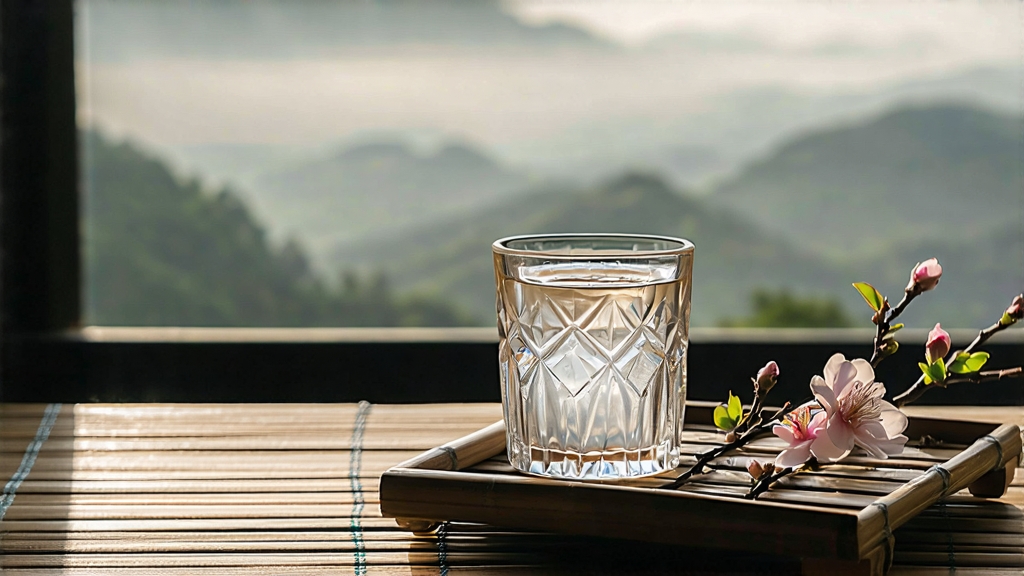
When Chinese tea lovers whisper the words “white tea,” they are usually thinking first of Fuding Silver Needle—Bai Hao Yin Zhen—the silken spear of buds that looks as if someone captured moonlight and tucked it inside a leaf. To the international eye the pale liquor may seem timid, yet in the cup it carries the hush of pine forests after rain, the cool lift of melon rind, and a sweetness that lingers like a distant temple bell. This essay invites you to travel beyond the label and meet the living culture inside every downy tip.
-
A micro-history written in frost
White tea is not a modern marketing category; it is a Song-dynasty heirloom. The first written record appears in 1064 CE, when Song emperor Renzong’s tea tribute list mentions “white buds from Fuding,” noting that they were so scarce that only three baskets arrived at the palace. During the Ming, travelling pharmacists discovered that villagers brewed these buds to cool feverish children, and by the Qing the buds were pressed into cakes, shipped along the Tea-Horse Road, and traded for Tibetan horses. When British plant-hunter Robert Fortune passed through Fuding in 1851 he mistook the withering sheds for silk mills—an error that still delights local guides. The 20th century brought war, red soil erosion, and a near abandonment of old gardens, yet a single state-run research station kept 2.3 mu of Song-era mother trees alive. Those trees, now protected as national treasure #001, still supply cuttings for every legitimate Silver Needle garden today. -
Geography that tastes like stone and sea
Fuding lies on the northeast horn of Fujian province where the Wuyi Mountains tumble into the East China Sea. The county enjoys a rare dual climate: subtropical humidity carried by monsoon, plus maritime breezes that lower night temperatures. The result is a 10 °C diurnal swing during April budding season, forcing the tea bush to thicken its cell walls and hoard amino acids. Soils are lateritic granite mixed with quartz; they drain instantly after downpours yet hold just enough moisture to keep roots hunting. Locals insist the tea tastes of “stone milk,” a minerality that laboratory tests attribute to high strontium and low cadmium—an edible fingerprint impossible to replicate in Yunnan or Assam. -
The taxonomy of a single bud
Western catalogues often lump all white teas together, but Chinese connoisseurs recognise three distinct styles of Silver Needle alone:- Beilu Yin Zhen: northern road, picked before Qingming festival, down so dense it looks frosted; aroma of lychee pit.
- Nalu Yin Zhen: southern road, picked between Qingming and Grain Rain; longer stems, brighter cup, hint of marine iodine.
- Gaoshan Yin Zhen: high mountain micro-lots above 800 m, harvested only on three misty mornings; jasmine lactones dominate, finish lasts five minutes.
Each style is further sorted into four grades based on bud length (2.5–3.2 cm), colour uniformity (ivory, not greenish), and presence of the tiny leaf-scale that must remain attached yet invisible. Top-grade lots number only 480 kg per spring—less than the annual yield of a single Bordeaux château.
-
Crafting silence: the art of non-intervention
Silver Needle is the least manufactured tea in China; its perfection lies in what the tea master refuses to do. Picking starts at 5:30 a.m. while dew still glues the down flat—any later and sunlight will oxidise the cut surface. Buds are laid on bamboo trays exactly 2 cm thick, then wheeled into a withering loft whose windows are cracked to a trigonometry of 15° north, never facing direct sun. For 48 hours the master only adjusts humidity, never temperature, allowing ambient microbes to initiate a slow enzymatic fade. When the bud’s moisture drops to 40 %, trays are moved to a lower room where charcoal embers smoulder at 28 °C—low enough to keep lactones alive yet high enough to fix the silver colour. No rolling, no pan-firing, no shaking; the bud must retain its spear shape so that when steeped it stands upright like a miniature lighthouse. Finally the tea is “sun-bathed” for exactly 17 minutes on the third